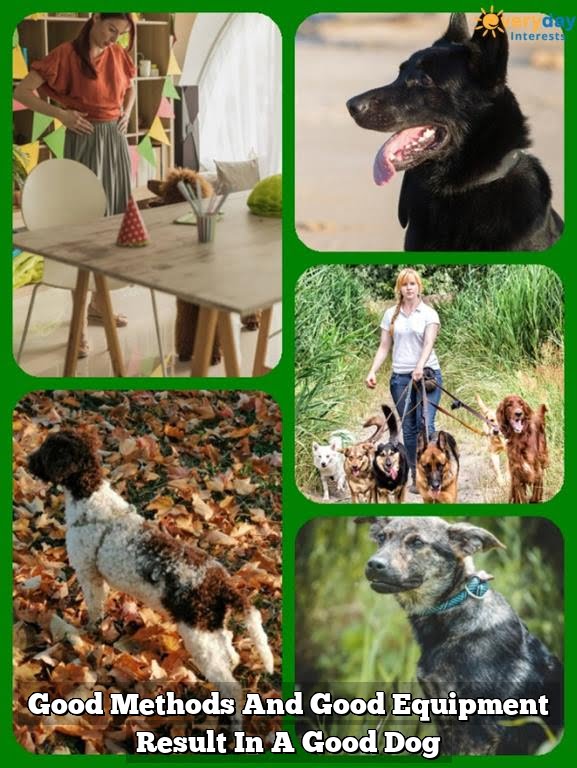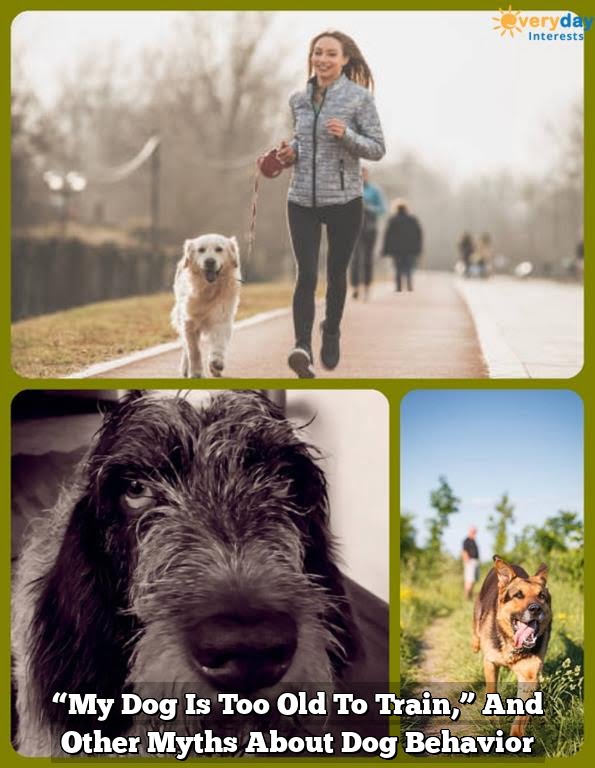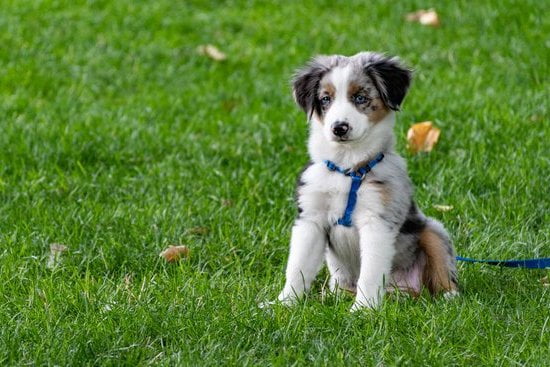Introduction
Training your dog is an important part of being a responsible pet owner. Teaching your dog proper behaviors not only increases the bond between you and your pup, but also serves to protect them from potential dangers. Training can vary from basic commands such as sit, stay, and come to more complex manners like greeting visitors properly or exhibiting acceptable behavior in new environments. It is important to provide consistent, clear instructions so that they understand what is expected of them in their daily lives. With patience and consistency, you can train your canine companion the right way, creating a relationship based on trust and respect.
Creating a Positive Response to Training
When training a dog to have good behavior, it is important to create a positive response. This can be achieved by offering treats for correct responses, verbal and physical praise for doing the right thing, and never punishing or reprimanding the animal when they make mistakes. The rewards should always be given immediately after your dog correctly responds so that the behavior is reinforced. If a specific command is not followed, you should simply repeat the command again until it is successfully completed. This shows your dog that they are only rewarded when they give an appropriate response. Furthermore, consistency during training is key in reinforcing certain behaviors with your pet; you should use the same language each time you give an instruction and ensure each family member follows this rule as well. Finally, provide plenty of opportunities for playtime with your dog – this helps establish a strong bond between you and your pet while also providing mental stimulation and physical exercise.
Positive Reinforcement Training Techniques & Exercises
The first step to training a dog good behavior is to start with basic commands. Start by teaching them “sit,” “stay,” and “come” as the basic foundation of good manners. Use positive reinforcement such as treats, verbal praise or petting for desired behaviors like sitting or staying when told. Timing is very important in training so make sure you reward your dog right after they do what you asked.
You can also incorporate more advanced exercises to teach your dog basic manners such as walking calmly on leash, letting go of items when asked, not jumping on people, and much more. For these types of commands use the same basic principals of reward-based training; provide a treat after they perform the desired behavior or command. Make sure you give verbal praise at the same time too add to the positive reinforcement.
In addition to regular exercise activities like walks around the neighborhood, playtime in the yard or park involve doing simple obedience exercises like walking in circles around objects (chairs, potted plants), waiting for permission before going through doorways or coming out of rooms, and many other creative ways that help reinforce good behaviors. It’s also important to provide plenty of mental stimulation like puzzle toys filled with food that rewards your pup every time they figure out how to get their treats. This encourages them to think outside the box and work for their rewards which builds strong bonds between you and your pet over time!
Understanding Corrections and Their Proper Use
Corrections are an important part of training a dog good behavior. Corrections are used to modify or stop bad behaviors, as well as reinforce good ones. A correction should be time-sensitive and immediate, meaning that it should be given as soon as the negative behavior occurs, in order for it to be effective. They consist of verbal reprimands such as “No!” and sometimes physical stimulations such as slight leash pressure, gentle tugs and taps on the side of their neck or under their muzzle.
In addition to using verbal reprimands, trainers should also strive to consistently use positive reinforcement techniques when teaching obedience commands. This can include treats, playtime with toys or other forms of praise like petting or verbal reward. It is best to give rewards every time the dog responds correctly so they understand what they did right and why they were rewarded. Mixing corrections and rewards is key when training a dog good behavior – if the dog performs a command correctly and receives a reward but then exhibits negative behavior shortly after receiving the reward it is important to correct that improper behavior immediately so they learn how their actions have consequences. Giving rewards and corrections correctly will help create structure between your pet and you allowing consistency in training which will result in fast results with adherence to rules set by yourself as your pet’s owner or trainer.
Identifying Dog Behavior and Communicating with Your Dog
Training a dog to exhibit good behavior is an important way to ensure that your household runs smoothly and peacefully. To help train your dog, it’s important to first understand their behavior. Different breeds of dogs will have different reactions and responses to certain commands so be sure to understand your specific breed type in terms of their tendencies. Additionally, it’s important to read the body language of your dog as well as learn cues from them like eye contact, tail wagging, or barking that they may be trying to communicate with you.
Once you have identified appropriate behaviors for your breed and can pick up on the indicators that your dog provides, it’s time to start the training process. Positive reinforcement should be used in reinforcing desirable behaviors such as rewarding good behavior with treats, playtime, praise or other forms of affection. Avoid using negative reinforcement; punishing bad behavior can often backfire and unintentionally make the bad behavior more persistent.
Consistency is key during the training process – work with your pup every day and make sure everyone in the household uses the same commands and understands what you expect from him. Additionally, it helps establish trust between your pup and family members when everyone is communicating at a level they can understand! Ultimately, training does take dedication but if done correctly will lead you to having a trusted companion for many years down the road!
Establishing Rules and Staying Consistent
One of the most important steps in training a dog is establishing clear rules and staying consistent with them. Consistency is key when it comes to teaching your pet appropriate behavior, as dogs learn best when boundaries are consistent and predictable. Knowing what you can expect frequently helps them become more obedient, and prevents confusion or frustration. It’s important to set these expectations right away, and reward or discourage behavior accordingly. You must also be confident in your direction and remain firm during training sessions; sending mixed signals confuses dogs and makes it harder for them to remember instructions.
When setting rules, consider things like where your pet will sleep, what they should do when visitors arrive, and if they’ll have free roam of the house (or specific rooms). Put verbal cues to each instruction and enforce them regularly–when visitors arrive, you could say “Go to your spot” as one example. Every time you give a command make sure you deliver it clearly with authority and stay consistent with rewards or redirection when necessary; this keeps the dog focused on obeying commands instead of simply pursuing possible treats.
It isn’t enough just to set rules—you must communicate to the dog that these rules are non-negotiable, recognize progress as it happens, provide positive reinforcement through treats or toys when appropriate commands are followed, provide clear instructions and stick to them consistently over time. Furthermore, it’s important to be patient while working through any challenging periods in order for trust and respect to develop between the dog owners and their furry family member.
Creating a Balanced Exercise Program to Support Good Behavior
Training a dog to have good behavior starts with creating a balanced exercise program, as physical activity helps dogs burn off energy and can aid in making them more relaxed throughout the day. Practicing basic commands during walks is one way to incorporate training into exercise time. Not only does this help keep the dog’s mind occupied, it also rewards their effort with stimulation and treats for a job well done. This can be anything from recalling their name when called, or following commands such as “sit” or “stay”. After each walk or breathing session, increase the difficulty by adding multiple steps before rewarding with treats; this will teach your pup to pay attention and stay focused through distraction — key elements of good behavior. Taking time out of each day to play ball games is another great way to give your pooch physical and mental motivation while teaching essential skills such as notifying barker that it’s OK to jump up or stop pull on their leash. A balanced exercise program makes sure that your pup has all the necessary tools they need to practice positive behavior while having fun alongside their favorite person in the process!
Troubleshooting Training Challenges
Occasionally, you’ll run into challenges while training your dog good behavior. In these cases, it’s important to remain consistent and patient. Here are a few tips to help troubleshoot some common challenges when training your pup:
1. If your dog is having difficulty mastering a command or individual trick, break it down into smaller pieces of instruction and reward progress at each step. This helps the dog understand what he needs to do for success.
2. Don’t be discouraged if the same behaviour challenges continue to persist; instead find ways to make the activities more fun so that the pup enjoys them more. You could try using higher-value treats, or making sure there’s plenty of toys and activity during training time.
3. Praise your dog often when they do something right! Make sure it’s an enthusiastic “good boy” or a gentle pat on the head rather than something more aggressive like a yell. Doing this helps foster a positive connection with you and your furry friend, which is essential for successful training sessions in the long run!
4. Finally, be aware of any behaviors that may be causing frustration for yourself (e.g., pulling on leash) and consider seeking professional consultation from an experienced trainer if needed. With patience and proper guidance, you can make sure that your pup has all the tools he needs to become a well-behaved pet!
Conclusion
Training your dog for good behavior is an ongoing, rewarding process. Establishing and reinforcing basic cues like sit, stay, and come are essential to helping your pup become a well-behaved pooch. Providing positive reinforcement can go a long way in motivating desirable behaviors while keeping training sessions engaging and enjoyable for both you and your four-legged friend. Lastly, remember that a tired pup can get into trouble just like an energetic one – ensure that your furry pal is getting the physical activity, mental stimulation, and emotional support necessary for long-term success with their good behavior. With consistent care, patience, and plenty of treats, you can help ensure a lasting durable connection with you doggo that will be built on trust, respect, dedication—and of course lots of cuddles!

Welcome to the blog! I am a professional dog trainer and have been working with dogs for many years. In this blog, I will be discussing various topics related to dog training, including tips, tricks, and advice. I hope you find this information helpful and informative. Thanks for reading!





